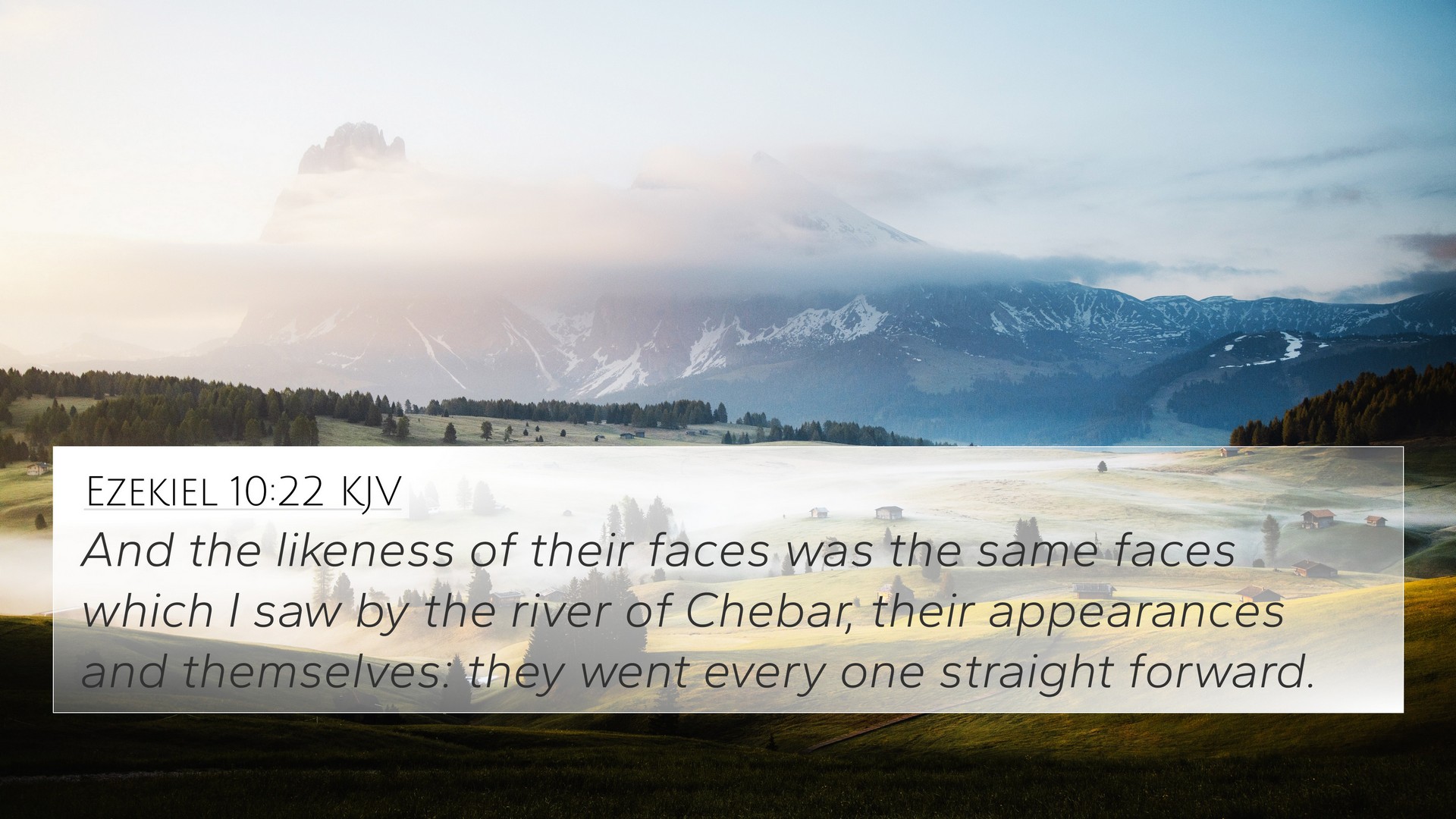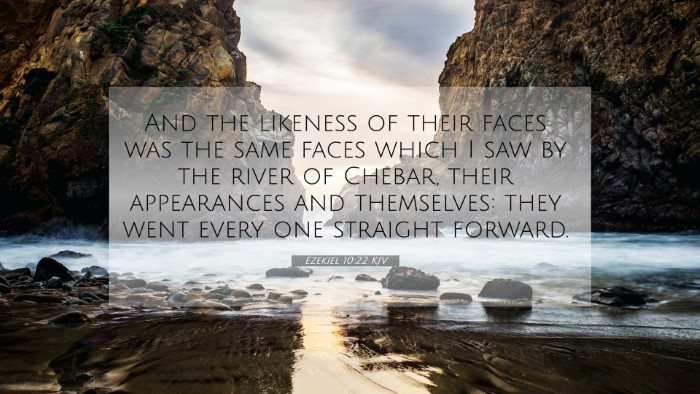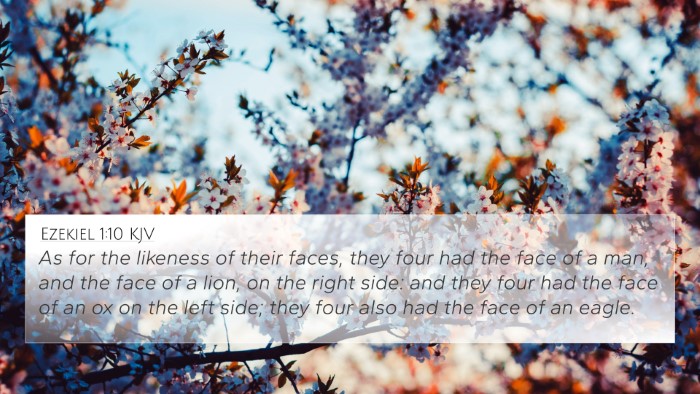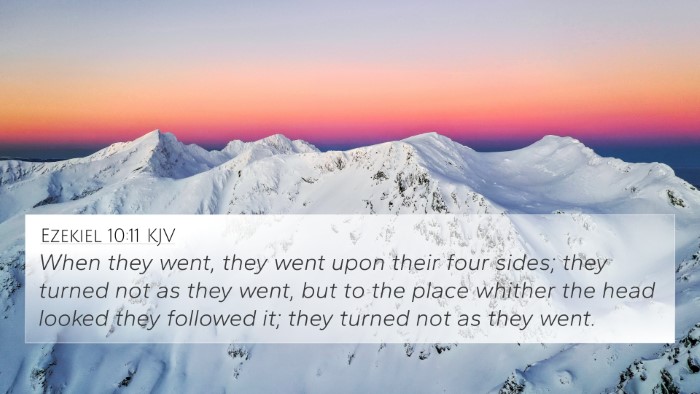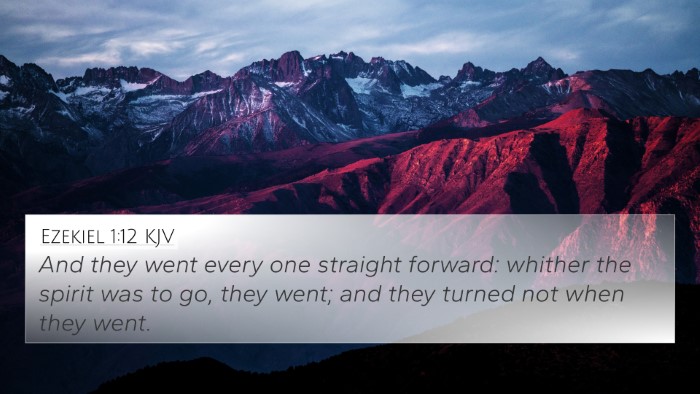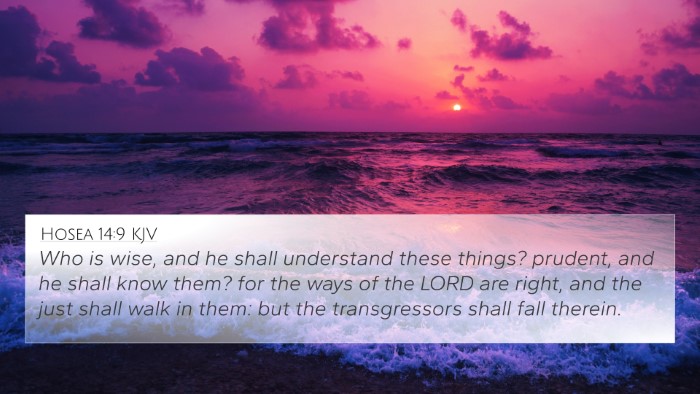Ezekiel 10:22 - Verse Meaning and Interpretation
Ezekiel 10:22 states: "And the likeness of their faces was the same as the faces which I saw by the river Chebar; their appearance and themselves: they went every one straight forward." This verse is part of a prophetic vision that the prophet Ezekiel received. It speaks to the consistency and divinity of the beings that God has created, demonstrating a connection to the earlier vision by the river Chebar.
Summary of Insights from Commentaries
The interpretations provided by Matthew Henry, Albert Barnes, and Adam Clarke reveal profound layers of meaning within this verse. Here we combine these insights for deeper understanding:
-
Matthew Henry's Commentary:
Henry emphasizes the steadfast nature of the divine beings, noting their unchanging appearance as a reflection of God's eternal truth. Their direction signifies the purposefulness of God's judgments and the clarity that He provides to His servants.
-
Albert Barnes' Notes:
Barnes reinforces the vision's continuity, pointing out that the likeness of the faces connects back to the earlier encounter with God. This suggests familiarity and consistency within divine revelations. The directive of moving straight forward symbolizes unwavering obedience to God's will.
-
Adam Clarke's Commentary:
Clarke underlines the significant connection of the vision in Ezekiel 1, likening it to a celestial chariot. He discusses how the angels or living creatures present in the vision possess a divine structure and order that reflects heaven's harmony, emphasizing their role in God's heavenly government.
Biblical Context
Ezekiel 10:22 fits within the greater narrative of Ezekiel's prophecies that often convey messages of judgment and restoration. The context of the vision in chapters 1 and 10 depicts God's sovereignty and the judgment about to be pronounced upon Jerusalem. This verse plays a critical role in portraying God's system of governance through His emissaries.
Cross-References Related to Ezekiel 10:22
- Ezekiel 1:1-28: The visionary introduction and description of the living beings.
- Isaiah 6:2-3: The vision of the seraphim, showcasing beings that worship and serve God.
- Revelation 4:6-8: The creatures surrounding the throne of God, similar in appearance to those in Ezekiel.
- Exodus 25:20: The cherubim on the mercy seat, indicating their role in God's presence.
- Daniel 7:10: A vision of divine judgment with a focus on the heavenly beings.
- 2 Corinthians 5:7: A verse emphasizing faith which parallels the moving forward concept in Ezekiel.
- Psalms 104:4: Referring to God's ministering spirits, echoing Ezekiel's depiction of divine beings.
- Hebrews 1:14: Angels as ministering spirits relates to the beings' purpose in Ezekiel's vision.
- Matthew 28:2-3: The angelic beings at the resurrection embody similar characteristics as those in Ezekiel.
- Luke 1:19: The angel Gabriel emphasizing the roles of angelic beings in delivering God's message.
Thematic Connections
This verse encourages a comparative Bible verse analysis that opens discussions on the nature of divine beings across scriptures. The thematic elements of divine order, consistency, and the forward movement in God's will are prevalent throughout scripture. It invites exploration into:
- Connections between Old and New Testament revelations.
- Understanding the role of angels and divine messages in different biblical texts.
- Examining parallels in prophetic literature and their relevance today.
Conclusion
Ezekiel 10:22 serves as a powerful reminder of God's unchanging nature and the obedience expected of His creations. Cross-referencing this verse with others deepens our understanding of not only Ezekiel's message but also the overarching narrative of God's plan throughout scripture.
Additional Resources
For further exploration and study, consider utilizing tools for Bible cross-referencing such as:
- Bible concordance to find related verses.
- Cross-reference Bible study guides that provide systematic approaches.
- Comprehensive Bible cross-reference materials that compile thematic connections.
By engaging in these methods, one can effectively uncover the inter-Biblical dialogue and link various scriptures that illuminate the richness of God's Word.
